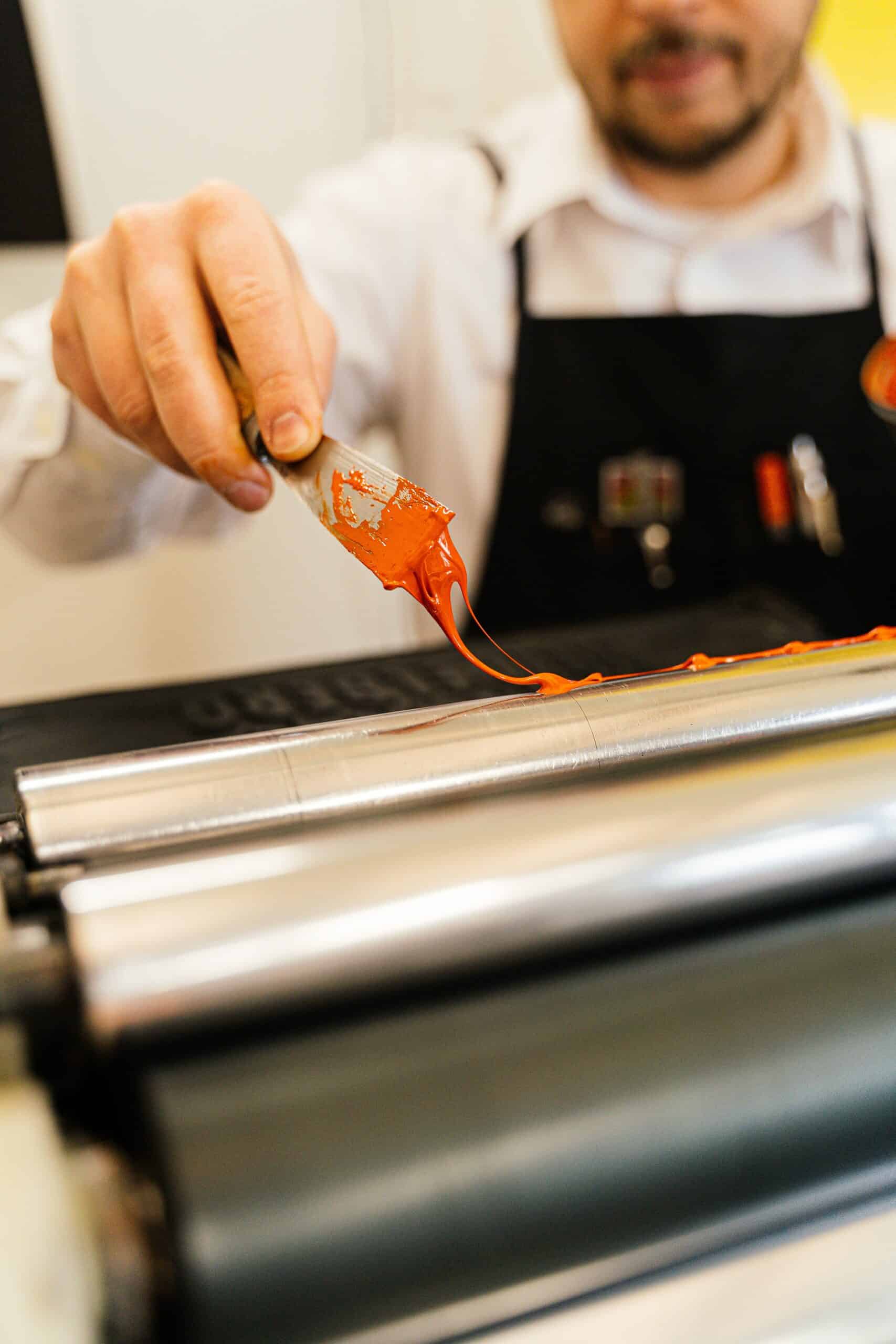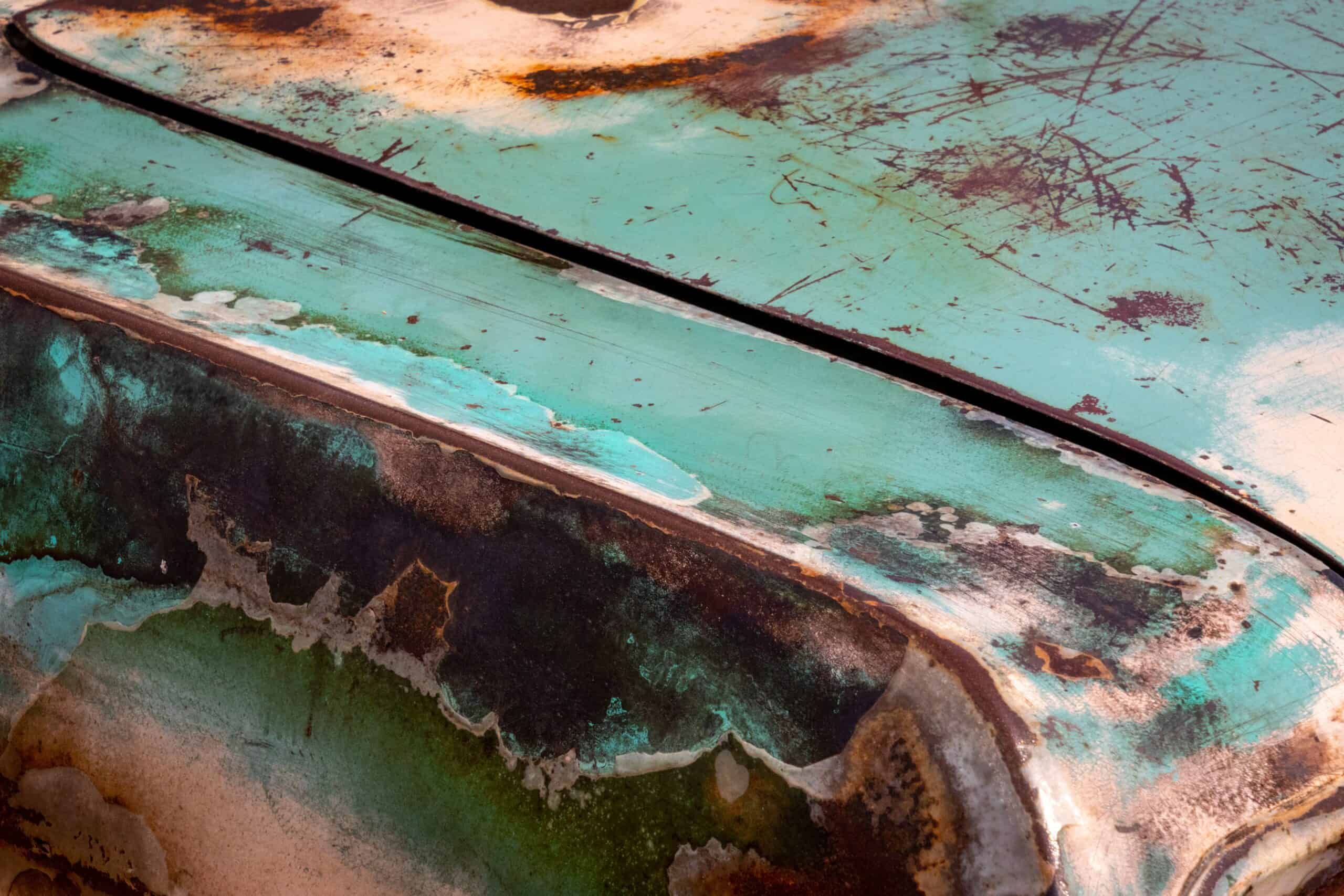How To Seal Acrylic Paint On Metal?
Painting on metal surfaces is an art form as old as time, with ancient civilizations adorning their weapons and tools in beautiful hues. But if you're looking to create a lasting work of art today, sealing your acrylic paint onto metal requires modern techniques. With the right know-how, you can be sure that your masterpiece won't end up tarnished or faded - just like new!
Creating stunning works of art on metal surfaces has never been easier; all it takes is some preparation and the proper supplies. In this article, we'll take a deep dive into how to seal acrylic paint on metal so you can breathe life into any project with confidence. From prepping the surface to choosing the right sealer, I'll provide step-by-step instructions for giving your artwork extra protection from wear and tear.
Ready to get crafty? Let's hit the ground running and learn how to seal acrylic paint on metal like a pro!
What Type Of Paint To Use On Metal?
Painting metal can be a daunting task, but with the right products and proper preparation, you’ll have your project looking fabulous in no time. To ensure that your paint job will last, it's essential to choose the correct type of exterior paint for the material.
When searching for an acrylic paint suitable for use on metal surfaces, oil-based paints are usually a safe bet because they offer superior adhesion and durability. Furthermore, these types of paints tend to provide better resistance against moisture and extreme temperatures which is ideal for those working on outdoor projects. Be sure to select a high-quality product from a trusted brand when selecting your oil-based paint as this will help guarantee maximum performance over time. Additionally, choosing an appropriate primer will also enhance your results dramatically; opt for one specifically designed for metal if possible.
With such an array of options available, finding the perfect product to suit your needs may seem overwhelming at first glance. But by following some basic guidelines like selecting exterior grade oil-based paints or opting for specialized primers, you're well on your way to creating beautiful artwork with guaranteed longevity - without any stress!

Preparing The Metal Surface For Painting
I'm sure you've heard the phrase, "prepare to prepare". Well, that's certainly true when it comes to painting metal. Before I even think about what type of paint to use on my project, I need to make sure the surface is properly prepared. This involves using a wire brush and masking tape for areas where precision is required.
The first step in preparing the metal surface for painting is to give it a good scrub with a wire brush. This will remove any dirt or rust from the surface and provide an ideal canvas for painting later on. Make sure every inch of your project has been given a thorough cleaning before moving forward!
Next, apply some masking tape around any areas you don't want paint – this could be edges or corners where you don’t want paint seeping through. Once all these steps have been completed, you can move on to applying a primer which will help ensure whatever type of paint you choose adheres securely to your metal project.
Applying A Primer To The Metal
The last step before applying paint to metal is often overlooked. It takes a few extra steps, but it's well worth the effort to achieve an excellent outcome. Priming the metal with oil-based primer or spray primer can be a daunting task, but it's essential for sealing acrylic paints on any metal piece.
When priming metal surfaces, one must ensure that all grease and rust are removed from the surface before application. This involves wiping down the entire area with acetone or denatured alcohol, then rinsing and drying thoroughly. Once cleaned, apply light coats of oil-based primer or use a quality aerosol spray primer designed specifically for metals; this will create a sealant between the layers of paint and the substrate beneath them.
Allow each coat to dry fully before applying another layer until you have achieved full coverage. It may take several coats of primer depending on how much texture there is on your particular piece of metal; however, once done correctly, you can rest assured that your paint job will look great when finished!
Allowing adequate time for preparation as well as ensuring proper application techniques will help make sure that your painted project looks beautiful and lasts for years to come. With these tips in mind, we’re ready to move on to our next step - applying acrylic paint to the metal!
Applying Acrylic Paint To Metal
Painting metal with acrylics is like stepping onto a treasure hunt. You're ready to explore, discover, and create something beautiful along the way. To get started, you'll need some acrylic enamel paint and a metal object you'd like to paint. The key to success lies in prepping your surface properly and applying multiple coats of paint for an even finish.
First things first: you must clean any rust or dirt off the metal before you start painting. Once the surface is smooth and free from dust, take a few minutes to apply a coat of primer - this will help create an even base layer for your paints. Then comes the fun bit; choose whichever colors inspire you and apply them directly onto the metal in thin layers so they don't run together too much as they dry. If necessary, use a brush or roller to spread out the paint until it covers everything evenly.
When all your layers are applied and dried, add one final topcoat of clear sealant for protection against weathering or fading over time. This step could be make-or-break when it comes to preserving your masterpiece! So take care when applying it - if done correctly, it will keep your artwork looking bright for years to come. With just a few simple steps, you can transform any metal object into an eye-catching work of art!
Sealing Acrylic Paint On Metal
Sealing acrylic paint on metal is an important step in any painting project. It helps protect the work from scratches and fading, as well as giving it a glossy finish. Here are 4 steps to get you started:
- Start by cleaning your surface with mineral spirits and wiping off any dust or dirt. This will give you a nice clean base for your sealant.
- Once the surface is dry, apply several thin coats of acrylic polymer varnish overtop of the paint job. Be sure to let each coat dry before adding another layer!
- If you're working with stainless steel, use a primer first to help prevent rusting and corrosion. This can also improve adhesion between the layers of varnish and paint.
- Allow the last coat of varnish to fully cure before handling or displaying your piece - this could take anywhere from two days up to three weeks depending on environmental conditions!
Now that you have sealed your acrylic paint onto metal, there are other ways to ensure its longevity such as using protective sprays or waxes. We'll look at these options next so stay tuned!

Different Ways To Seal Acrylic Paint
When it comes to sealing acrylic paint on metal, you may be wondering if there are any other options besides oil paint. After all, oil paint is traditionally used for a glossy finish and protective coating. The good news is that there are several methods available for creating a durable seal with acrylic paint so that your project looks great for years to come.
One method involves using an archival varnish or gloss coat applied directly to the surface of the primed metal after painting. This will give your work a semi-glossy sheen while still providing protection from scratches, dents, and fading over time. Another option is to use a heat gun or blow dryer set at low heat to cure the painted area. This can provide a more permanent solution, but it does require patience and practice as too much heat could cause bubbling or cracking of the paint layer.
Finally, another popular choice is applying multiple thin layers of clear polyurethane spray sealant such as Krylon Clear Finish or Rustoleum Painter's Touch Ultra Cover 2X Gloss Clear Spray Paint. These products offer excellent UV protection and create an even more substantial barrier against damage than just varnish alone. Just make sure you follow instructions carefully when spraying these sealants onto metal surfaces!
Pros And Cons Of Using Acrylic Paint
Using acrylic paint is like picking a flavor of ice cream: there are so many delicious options to choose from. Whether you stick with the classic regular acrylic paints or opt for something more extravagant like acrylic spray paint, it's entirely up to you! With that said, here are some pros and cons when it comes to choosing acrylic paint:
Pros:
- Acrylic paint has excellent adhesion on almost any surface.
- It dries quickly and produces vibrant colors.
- You can use either brushes or sponges to apply the paint easily.
Cons:
- The pigment in the paint could fade over time if not sealed properly.
- It’s not waterproof unless mixed with an appropriate sealant.
- If using regular acrylic paint, you may need to mix your sealant as most brands don't come pre-mixed with one.
While there are advantages and disadvantages when using acrylic paints, they remain a popular choice among artists due to their versatility and affordability. Understanding how best to apply this type of paint can help ensure that your project stands the test of time without fading or chipping away.
Best Practices For Applying Acrylic Paint
"A stitch in time saves nine", so the old saying goes, and this is especially true when it comes to painting with acrylics. Taking the proper steps before you begin can save a lot of hassle later on. When applying acrylic paint on metal surfaces, some best practices should be followed for good results.
First off, it's always a good idea to use a primer or sealer first to ensure optimal adhesion of the paint. This will also help protect the metal surface from corrosion over time. It's important to choose one appropriate for metal if your project calls for an outdoor application. Once the primer has fully dried, you can then move on to prepping and painting the surface with your chosen colors of acrylic paints.
The best way to achieve even coverage is by using multiple thin coats instead of trying to apply one thick coat all at once. Allowing each layer of paint sufficient drying time between applications is critical; otherwise, you run the risk of creating drips or smudges which could ruin your final product! To get as smooth a finish as possible, consider sanding lightly after each coat before adding another layer.
Using these best practices when applying acrylic paint on metal surfaces will give you beautiful results without having to worry about any major issues down the road due to improper preparation or technique upfront. With a little care and attention paid upfront, you'll be ready to tackle sealing your masterpiece soon enough!
What To Avoid When Sealing Acrylic Paint?
Painting is a great way to express creativity, especially when using acrylic paints. But sealing the paint on metal can be tricky and time-consuming. To ensure optimal results, it's important to know what to avoid while sealing acrylic paint.
When applying protective layers over acrylic paint, don't use a damp cloth as this could cause smudges or leave behind residue. Instead, make sure you are using products specifically designed for sealing in the colors of your work. Be careful not to rush through the process either; allowing enough curing time will help prevent discoloration and fading in the long run.
Finally, steer clear of any subpar sealant solutions that may not hold up over time and ruin all your hard work before anyone gets to appreciate it! Quality always matters when it comes to protecting your artwork from wear and tear — so invest in reliable sealants if you want your painting to remain vibrant and beautiful for years to come.

Best Products For Sealing Acrylic Paint On Metal
Have you ever wondered what the best products are for sealing acrylic paint on metal? Nowadays, it is important to know how to properly seal your artwork. Here's a quick look at the top three options when it comes to sealing acrylic paint on metal surfaces: Acrylic Resin Varnish, Sealers, and Protective Clothing.
Acrylic Resin Varnish is an excellent choice when looking for a way to protect your painted piece against dirt, dust, and moisture. This product provides a hard coating that won't easily scratch or wear away with time. It also has UV protection properties which make it ideal for outdoor projects as well. Additionally, this varnish dries quickly and can be used over any type of acrylic paint.
Sealers are another great option for sealing in acrylic paint on metal surfaces. These should be applied after the painting process is finished and will help keep the colors vibrant and protected from fading or wearing off due to weathering effects. They come in various types such as water-based, alcohol-based, and oil-based so you can choose one based on your preferences.
Protective clothing is essential if you want to ensure that your painting remains free from scratches or other damage caused by everyday use. Wearing gloves while working with paints helps prevent staining clothes or skin with pigments and solvents which may lead to adverse reactions if not taken care of properly. Moreover, using protective goggles ensures that small particles don't get into the eyes while working on intricate details of the project.
By taking these steps toward proper preparation before beginning a painting project, you can guarantee long-lasting results without worrying about damaging your work down the line!
Benefits Of Using Acrylic Paint On Metal
It's widely accepted that acrylic paint is the best choice when it comes to painting metal surfaces. But what are the benefits of using this particular type of paint? It turns out, there are more than you might think! Here are four key advantages:
- Acrylic paint dries quickly, so your project will be completed promptly.
- The colors stay vibrant and true over time since they don't fade or chip easily.
- This type of paint is easy to clean up with just soap and water, making cleanup much simpler.
- You can achieve a professional-looking finish without having any prior experience or special skills.
The most impressive aspect of painting with acrylics on metal is how long-lasting the results can be. Unlike other types of paints, acrylics bond strongly with metal surfaces due to their chemical makeup - meaning that once dry, your paint job should last for years before needing touch-ups or reapplication.
These advantages make them ideal for outdoor projects like gates and fences where longevity is essential. Plus, if sealed correctly with an appropriate sealant product such as polyurethane varnish, then the color vibrancy will remain even longer!
So now we know why acrylics are such great options for painting onto metal surfaces – but how do you ensure your final coat looks perfect every time? We'll explore tips for achieving a flawless paint job next.
Tips For Painting Metal With Acrylic Paint
Painting metal with acrylic paint is like a roller-coaster ride. You don't know what you're going to get, but when done right the results can be stunning! Preparing and properly applying exterior acrylic paints onto surfaces of metals can ensure that your artwork won’t end up rusting away. Here are some tips on how to make sure your painting turns out exactly as you want it to.
To start, it's important to use an appropriate exterior acrylic paint stick for metal surfaces such as galvanized steel or iron. This will help create a strong bond between the surface and the paint itself and prevent any chipping or peeling down the road. Make sure to clean any dust or dirt from the metal surface before starting your project since this could affect adhesion too.
Once everything is prepped and ready, it's time for the fun part - painting! Apply thin coats of acrylic paint using either a brush or sprayer until you achieve desired coverage. Allow each coat ample drying time before adding additional layers so that all layers have enough time to dry completely without running together. For best results, finish with a layer of sealant designed for outdoor use specifically for external protection from elements such as rain and sun exposure.
This way, not only will your art come alive in vivid colors, but also stand up against the wear and tear of mother nature over time!
Protection From The Elements With Acrylic Paint
Painting metal with acrylic paint is a great way to add color and artistry to your project, but without proper protection, it can be washed away in an instant. Like painting on canvas, protecting the final product from UV rays and other weather conditions is essential for longevity - that's where a clear coat comes in!
Think of clear coats as a layer of armor over your beautiful artwork; they form a protective barrier against the elements so you don't have to worry about peeling or chipping. Apple Barrel offers several types of sealers that work well with their paints if you're looking for some extra assurance when working on outdoor projects. Plus, many are water-based and non-toxic which makes them safe around kids and pets too!
It doesn't take much time or effort to ensure your hard work lasts longer than just one season: simply apply two light layers of sealer after the last coat of paint has dried completely. This will help keep your masterpiece vibrant no matter what Mother Nature throws its way. With just this simple step, you'll feel confident knowing your colorful creation won't fade away anytime soon!

Cleaning And Maintaining Acrylic Paint On Metal
Cleaning and maintaining acrylic paint on metal requires a few simple steps to ensure your artwork lasts long-term. I'm going to walk you through the basics so that you can take proper care of your project!
First, it's important to remove any old paint from the surface before applying new layers of acrylic paint. This can be done with painter’s tape or a scraper. Once all the old paint has been removed, use a damp cloth and some mild soap and water to clean the area thoroughly. Be sure to rinse off all soap residue with clear water once finished cleaning. Here are four key points for properly preparing metal surfaces for painting:
- Use painter’s tape or a scraper to remove existing paint
- Clean the area using mild soap and warm water
- Rinse off all soap residue with clear water when done
- Let the surface dry completely before starting your project
After prepping your metal surface, you're ready to start working on your masterpiece! Make sure you take the time needed to put together quality work - this will help extend its life span much longer than if it wasn't maintained properly. With these tips in mind, you'll have no trouble keeping up with an acrylic-painted piece of metal over time. Now let's move on to troubleshooting common problems with acrylic paint on metal.
Troubleshooting Common Problems With Acrylic Paint On Metal
Do you have a metal garage door that's been painted with acrylic paint? Are you worried about it losing its original luster or becoming damaged in some way? Don't worry, I'm here to tell you all about the troubleshooting process for common problems with acrylic paint on metal surfaces!
For starters, if your surface has any rust or dirt buildup from years of exposure, take a few alcohol wipes and get rid of them. You can also use steel wool to scrub off old rust before applying new coats of paint. Just make sure to properly clean the area beforehand so that the new coat sticks well and won’t chip away after a short period.
Once you've got everything cleaned up, seal the painting using either an epoxy-based primer or a polyurethane coating. This will help keep the color vibrant and protect the underlying metal from further damage over time. Keep in mind though that these sealants aren't always necessary—it just depends on how much wear and tear your painting is likely to experience.
Be sure to apply two even coats of sealant for optimal protection as this will help ensure longevity for your acrylic-painted metal surface!
Conclusion
The possibilities of painting metal with acrylic paint are endless. Whether you're looking to add a pop of color to your outdoor furniture or simply want to spruce up a rusty old car, acrylic paint is the perfect option for any DIY project. With its easy application and long-lasting durability, there's no reason not to give it a try!
But don't be fooled - sealing acrylic paint on metal can be tricky business. You must take all necessary precautions when working with this type of medium to ensure a successful outcome. From proper preparation techniques to selecting the right sealant, there are many critical steps involved in getting optimal results.
So if you're feeling daring and have been itching to tackle an ambitious art project, why not start small by experimenting with acrylic paint on metal? Who knows – with the right supplies and knowledge of how to properly apply and seal it, you could end up creating something truly stunning!






